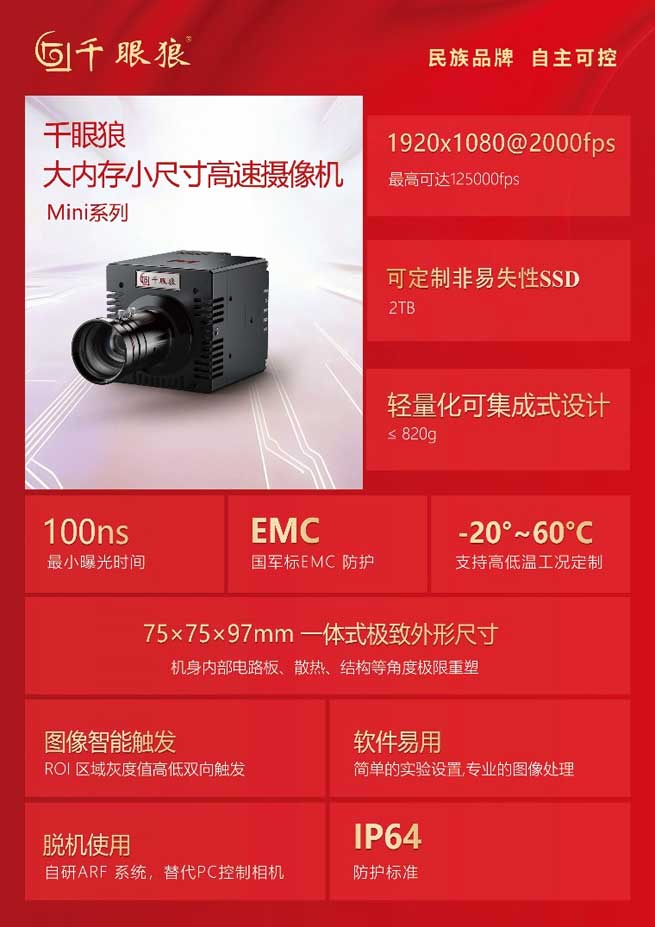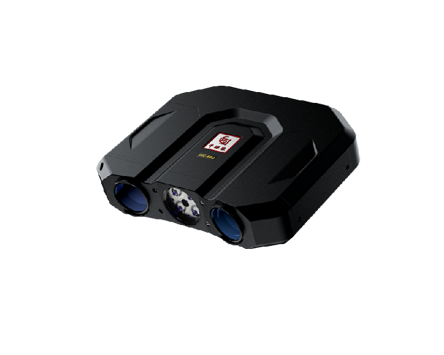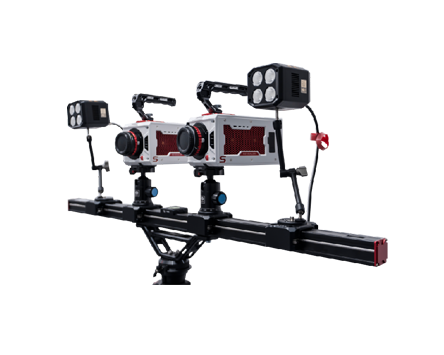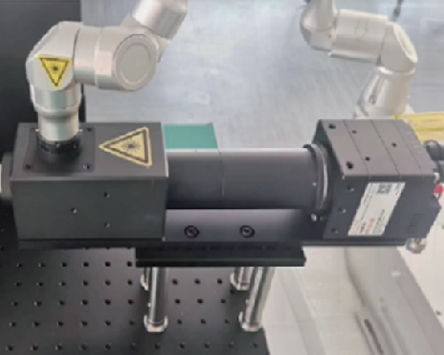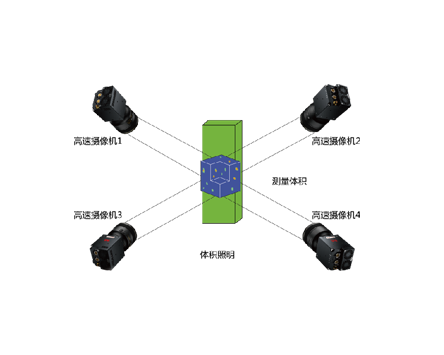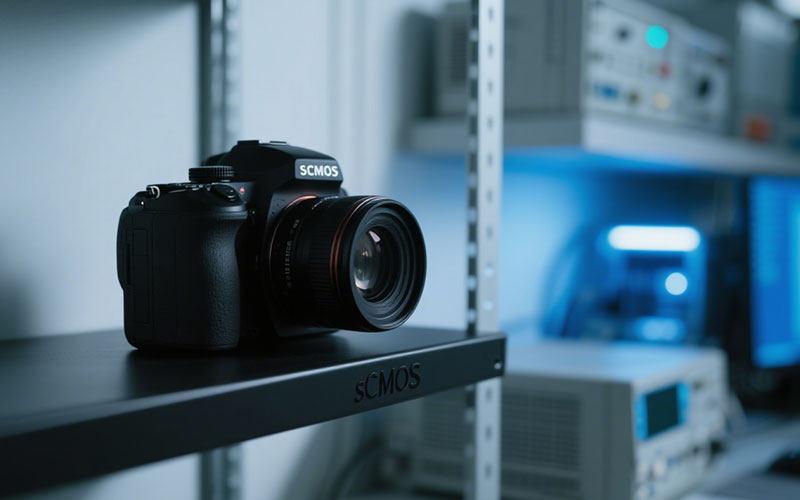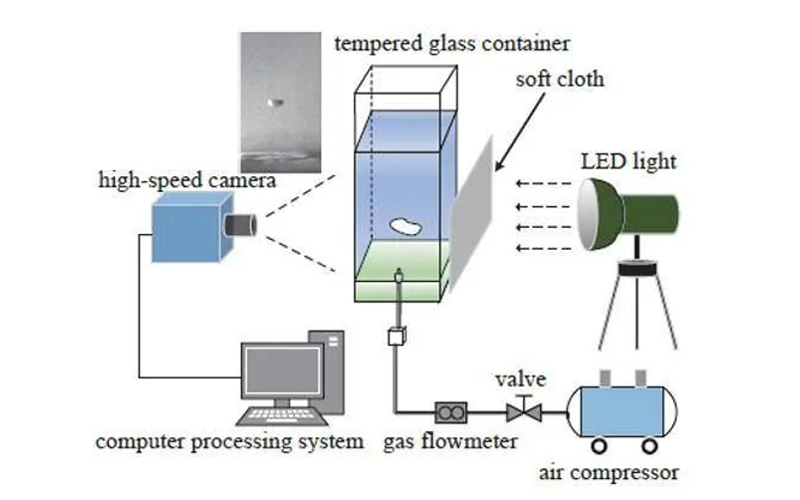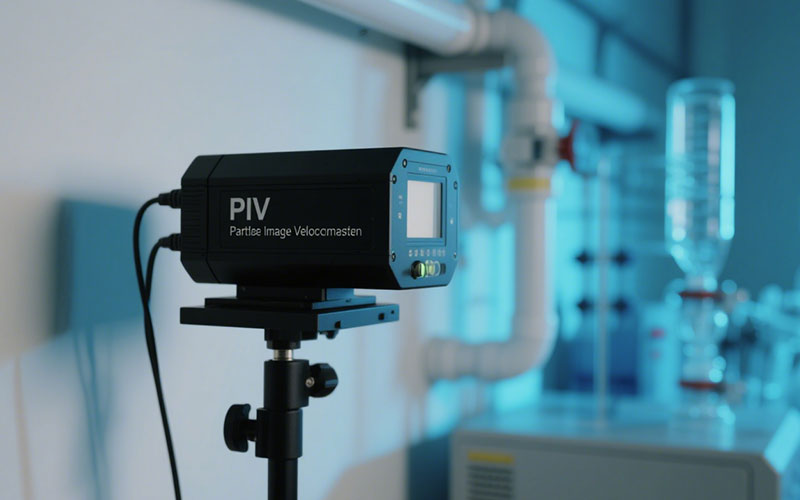
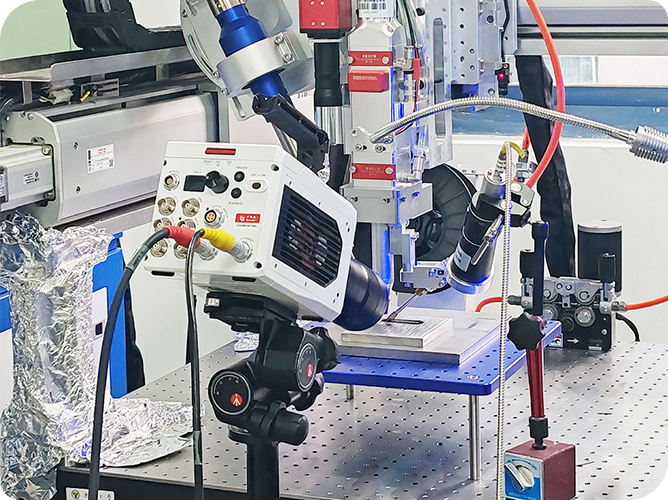
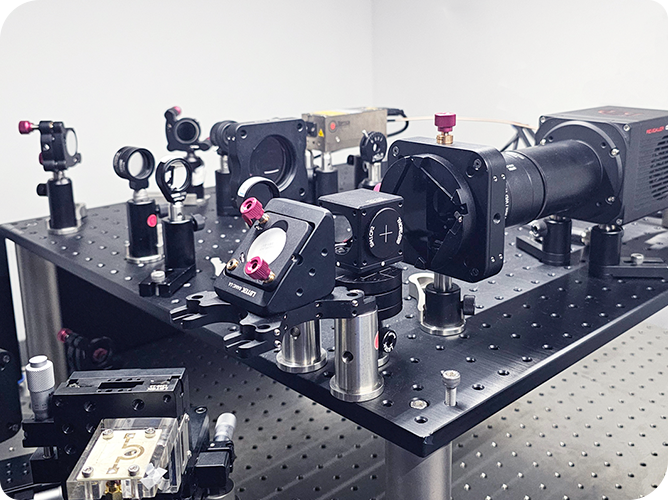
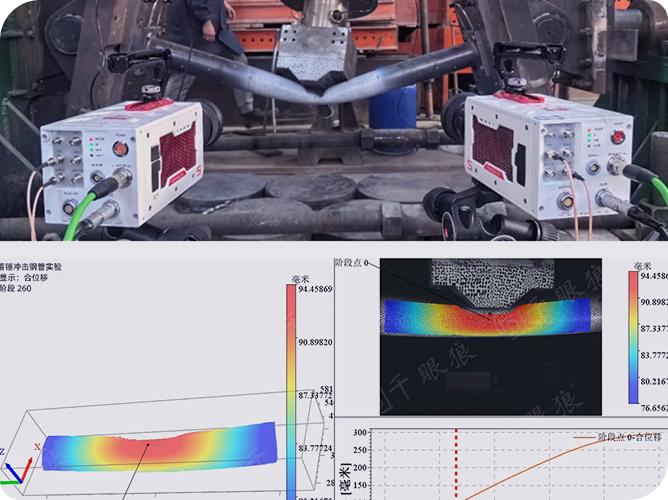
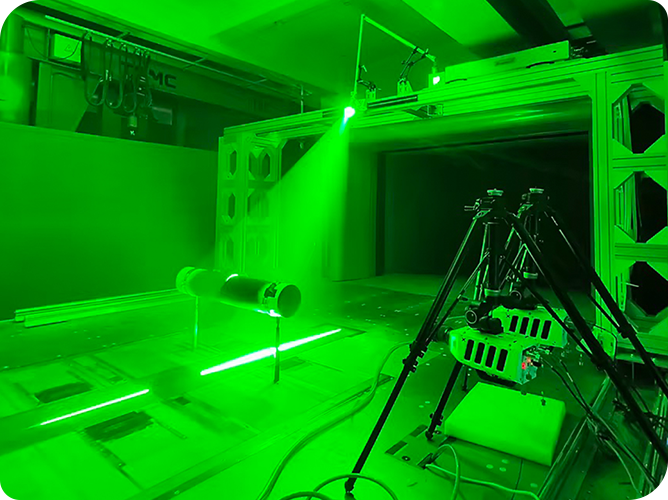
In the fields of aerospace and energy power, measuring the velocity field information of three-dimensional transient flow fields is critical for understanding fluid mechanics behavior and optimizing system design.
Traditional three-dimensional particle image velocimetry technologies such as Tomo tomography PIV rely on multi-camera arrays, have system volume and complex operation, and are difficult to measure in closed spaces; single-camera solutions such as light field PIV have resolution limitations.
Based on the Thousand Eye Wolf high-speed camera and PIV measurement technology, Ding Junfei's team at Taiyuan University of Technology innovatively proposed a three-color mask three-dimensional particle image velocimetry technology (Trichromatic Mask PIV) based on a single high-speed camera, which pioneered the integration of optical path modulation and intelligent algorithms to achieve full-frame, high-resolution three-dimensional transient velocity field measurement.
The research results were published in the paper "A volumetric particle image velocimetry technique based on single color camera with trichromatic mask"
1. Three-color mask imaging system: It consists of a Thousand Eyes Wolf Revealer Mini series high-speed camera, a customized three-color mask, and a lens. The three-color mask contains three narrow-band filters with wavelengths of 450/532/650nm, arranged in an equilateral triangle and installed in front of the camera lens. By modulating the color information of the light through the three-color mask, the RGB channels of the high-speed camera record images of three different perspectives respectively, realizing full-field and full-resolution 3D3C velocity field measurement.
2. Laser illumination system: High-energy white laser with wavelengths of 450/532/650nm and power of 3W, used to excite missing particles in the flow field.
3. Data acquisition and processing system: Equipped with a high-performance computer for particle image data acquisition, storage and processing. And GPU accelerated computing is used.
1. Build a three-color mask imaging system (Figure 1) and perform data acquisition. Single-frame images record particle information from three perspectives through RGB channels.
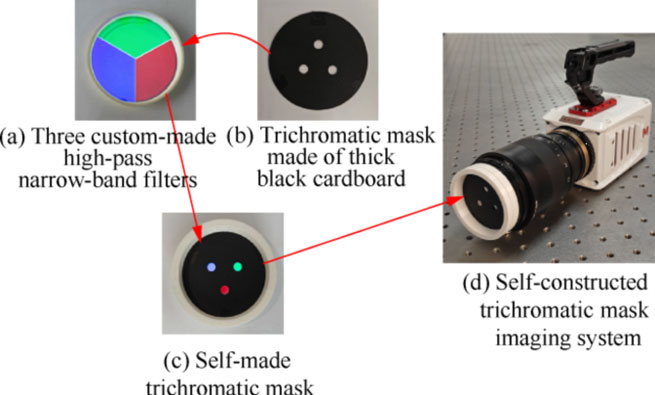
Figure 1
2. The projected particle images were synthesized by simulating artificial particle fields, and the MLOS-SMART algorithm was used for three-dimensional particle reconstruction.
3. The velocity field measurement accuracy of the three-color mask PIV technology was evaluated using the synthesized three-dimensional Gaussian eddy field.
4. A zero net mass flux jet ZNMF experimental platform was built to verify the actual measurement capability of the three-color mask PIV technology by comparing it with the stereo PIV and tomographic PIV technologies.
1. Particle reconstruction performance verification: The particle reconstruction performance of the three-color mask PIV system was analyzed in detail by simulating the artificial particle field and synthesizing the projected particle image. The MOLS-SMART algorithm was used to perform three-dimensional reconstruction of particle images under different parameters. Figure 2 shows a specific three-dimensional particle reconstruction result.
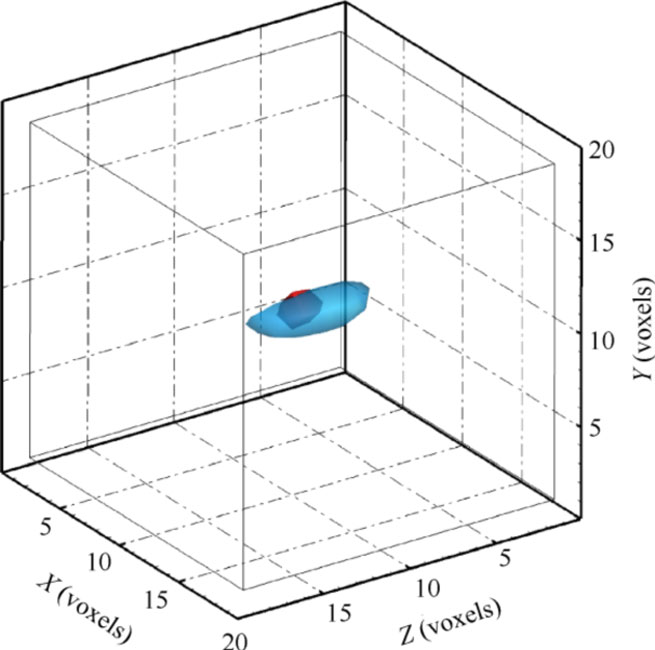
Figure 2
The blue ellipsoid represents the reconstructed particle shape, and the dark red represents the ideal particle shape. The difference is mainly due to the limited viewing angle of the three-color mask, which leads to an extension effect in the depth direction of the particle, affecting the quality of particle reconstruction and thus the accuracy of PIV measurement. The field of view can be increased and the particle reconstruction effect can be improved by optimizing relevant parameters, such as increasing the aperture diameter, increasing the mask hole spacing, reducing the focal length and shooting distance, etc.
2. Synthetic Gaussian vortex circulation field verification: The velocity field measurement accuracy of the three-color mask PIV technology is evaluated using a synthetic three-dimensional Gaussian vortex field. When the vortex core diameter is (1.4/-M) mm, the velocity field distribution is highly consistent with the theoretical model.
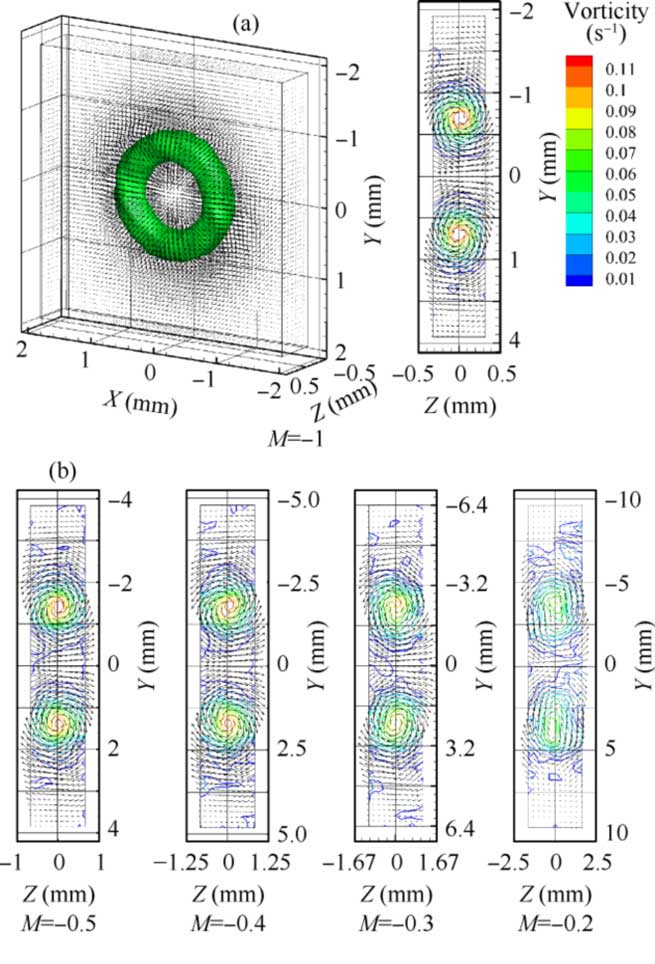
Figure 3
In the image processing stage, the original particle image captured by a single high-speed camera using a three-color mask imaging system shows the color information of the RGB channel fusion (Figure 3 (a)). After color crosstalk correction, the original image is separated into grayscale images of three independent perspectives: red, green, and blue (Figure 3 (b)-(d)), which clearly show the difference in particle distribution at different spatial positions: in the red perspective image (Figure 3 (b)), the longitudinal displacement of the particles behind the nozzle is significant, and the blue perspective (Figure 3 (d)) captures the details of the lateral vortex structure.
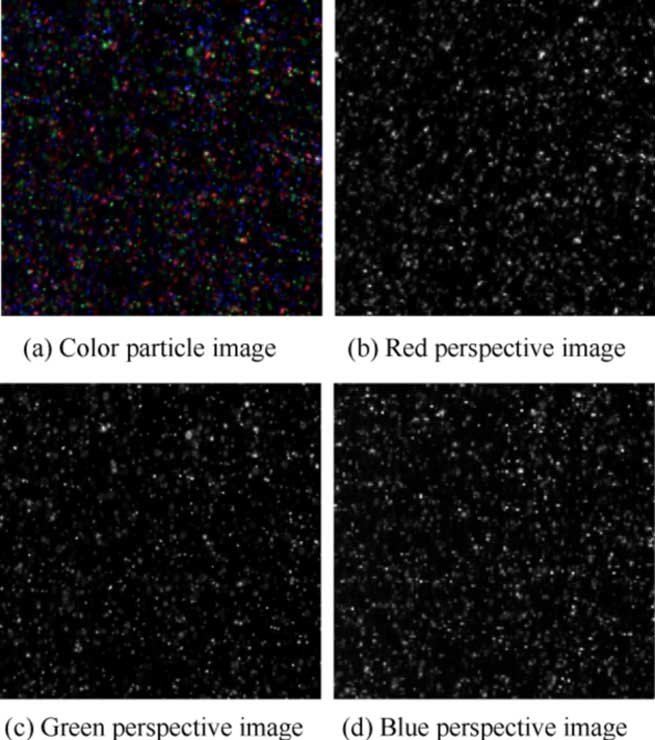
Figure 4
The experimental results show that the instantaneous vortex ring structure at the nozzle outlet (diameter 10mm, St=0.77, Re=32) and the velocity field are consistent with the classical jet characteristics. As time goes by, the main vortex ring moves downstream, the coherence of the flow field decreases, and the velocity vector and the size of the Z-direction vorticity decrease significantly.
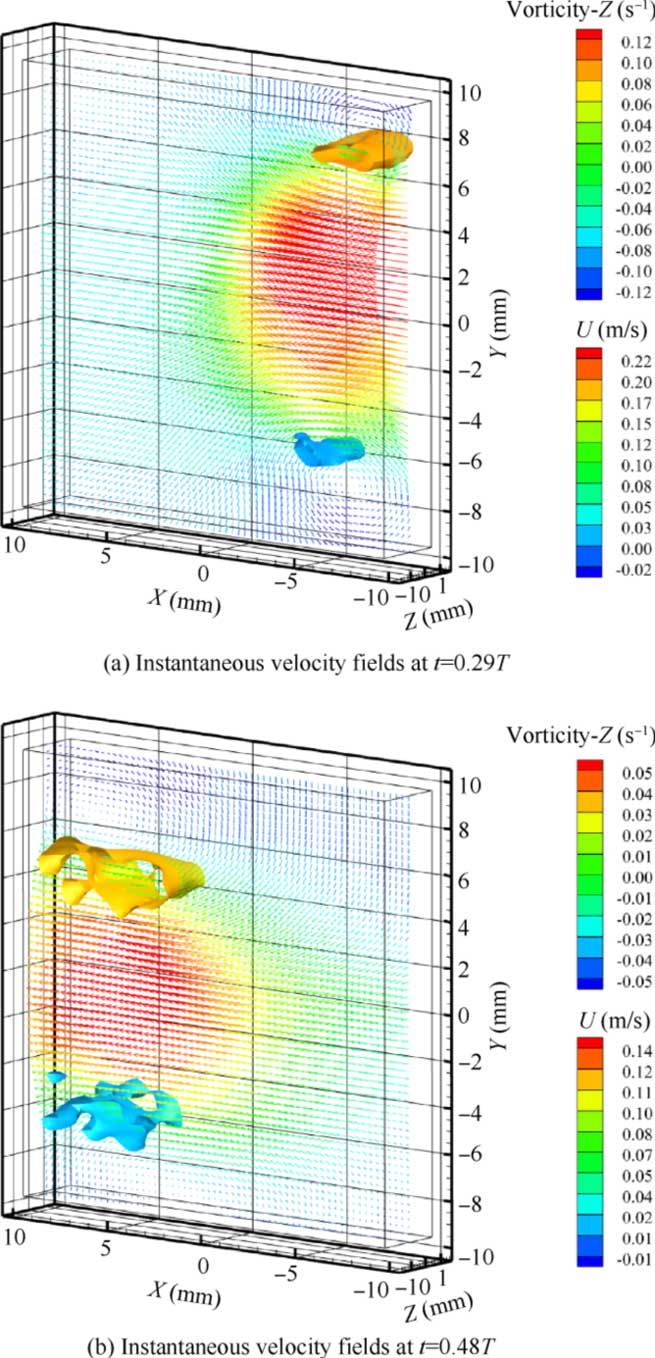
Figure 5
Through the velocity gradient change test, the divergence error Pearson coefficient Qdiv=0.76, which is consistent with the measurement results of the tomographic PIV (Qdiv=0.66) and stereo PIV (Qdiv=0.82) technologies, indicating that the technology has high measurement accuracy and reliability.
As a new 3D3C-PIV velocity field measurement method based on a single high-speed camera, the three-color mask PIV technology can accurately reconstruct the three-dimensional spatial distribution of particles in the flow field and calculate the transient velocity field. This provides strong support for in-depth research on the flow characteristics of complex flow fields, and also verifies the feasibility and effectiveness of the three-color mask PIV technology in actual flow field measurement. In the future, the three-color mask PIV technology is expected to play a greater role in aerospace, energy and power engineering, environmental engineering and other fields.
Revealer Mini series high-speed cameras have a 1080P high-definition frame rate of 3000 frames/second, a compact body design, and are suitable for high-precision dynamic capture in small spaces.
